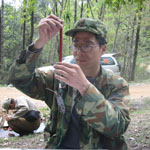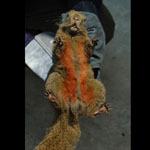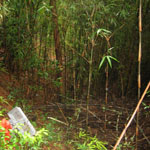
|
||||||||||||||||
|
||||||||||||||||
|
||||||||||||||||
Mammalogy in the Gaoligong Mountains Discoveries
Who is involved?
Where we collectedMap the mammals surveyed in each county by clicking on the links below: 2002: Nujiang Prefecture, Lushui and Fugong counties |
Dr. Matthew Durnin joined the project as a MacArthur Foundation Postdoctoral Fellow and CAS Research Associate in 2005. He resides in Beijing,China.
|
|
||||||||||||||
|
|
|
|||||||||||||||
|
|
Mammal team, Spring 2005 Expedition: (left to right) Li Yajie and Sun Guozheng (students from KIZ), Zang Jian (driver), and Ouyang Decai (field assistant). Any images of Jiang Xuelong? |
||||||||||||||







